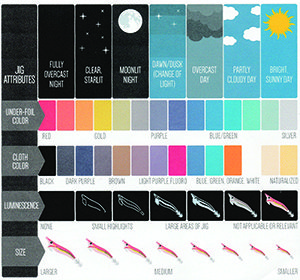


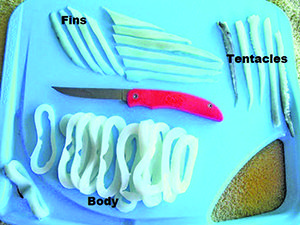
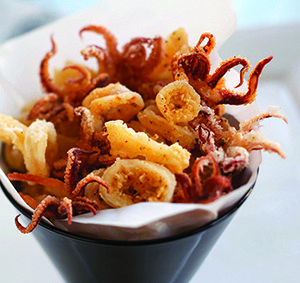
CATCHING squid is one of my favourite forms of light tackle fishing. It presents a unique challenge involving slightly different gear, plus the results are delicious.
Though a boat will often dominate the photos you see of squid catches, you can have just as much fun catching them from the shore, and there are a lot of dedicated shore-based squid fishos out there. The following covers the basic techniques for catching squid.
Target this creature with a light rod around 6-7’ – or a specific squid fishing rod – a reel size of around 2500-3000, a 14lb line or 10lb braid and a 14kg leader. They can change colour to adapt to their surroundings, they fire jets of ink to make a quick escape, they have amazing eye sight and above average intelligence, and are equal parts cunning predator and elusive prey.
If you really look at a squid and analyse the way it’s designed to perfectly adapt to its surroundings, you’ll have a whole lot more respect for them. The difference between the two species arrow and tiger is the tail – tiger squid have a more colourful back and tiger with a spot on their backs are female.
For finding and catching squid, you should be looking in tidal areas that contain structure squid like to hunt in. Weed beds and rock walls are two areas to be looking for them from the shoreline, and one of the many piers that dot the eastern side of the bay.
At night I like to put a glow stick on the line on top of the squid bait, it helps attract the squid. Where there are weed beds there are squid, and here you have less chance of snagging on rubble areas. Two hours before high, two hours after and at the bottom of the tide are prime times. The bay holds a multitude of areas for both boat and land-based fishing.
Most jigs are heavy and great for long casts, I prefer the 3-3.5g jigs and will often shave a 3.5g down to a 3g. I also paint the jigs with a clear lacquer to give it more shine in the water. You need the jig to sink at around eight to ten seconds per meter, so do some experimenting with your jigs to see what the sink rate is – in water over 3m a heavier weight such as a 3.5-4g is needed to get the jig down. You can also buy a squid jig spike, where you thread the rod up through a small pillie and use it instead of a jig.catching squid
Cast the jig out as far as you can and let it sink to the bottom, then start winding in with short lifts every few seconds until it’s back at your feet. The retrieve that works best on the day will suit the temperament of the squid, so its pays to change your technique each cast to see if they’re feeding aggressively or wary.
On a pier, if the water is 3m or more at the bottom, I often drop the jig down with a light stick and let it sit about a metre under the water. Quite often you will get an inquisitive squid take your jig. Have a look at the colour chart of jigs to give you an idea of colours to buy.
Once you hook a squid, it’s important to slowly wind the squid in, keeping tension on the line to keep it from releasing itself. Get it to the surface so it can’t fill its body with water and try to propel itself away – you can buy telescopic nets to help on those long drops from a pier. It is a foolish fisho who thinks the squid is done when it’s in near your feet because the squid can still shoot ink, and most times it’s at your face. To kill the squid, use a karate chop between the head and the body.
The way squid catch their prey is indeed quite different to fish. They use their long tentacles – also called candles – to capture prey. That is why a jig looks unlike any lure you have used before, and why when a squid grabs a jig it can’t release its tentacles.catching squid
Squiding does not tend to be a catch and release pastime. This is the reason they are good for two things – fishing and cooking. Remember to catch only what you need and stick to the bag limit of 20.
One barrier that deters some is cleaning and preparing squid to eat. There are a few basic principles and it takes a little practice.catching squid
Remove innards from squid by pulling the head and tentacles off. If you’re not going to use the tentacles, keep the head and tentacles together for use as bait on your next trip. Cut across the head, underneath eyes to separate tentacles, push tentacles outwards and squeeze the beak out and discard.
Slice off the wings from the body and cut into strips. Remove the skin from the body by running your finger underneath the skin, separating it from the flesh, then peel off in one piece and discard. Remove the backbone from the tube. Clean out the tube. Slice the body into circles – or score the tube – for frying.catching squid
I love nothing more than a simple salt and pepper squid. The worst crime is to overcook your squid, as it can turn it rubbery. Do not freeze squid you intend to eat otherwise they could turn rubbery when cooked. Fresh squid has a nice texture and flavour unlike any calamari you have eaten, possibly because the squid you have eaten before was frozen.
My recipe for salt and peppers squid: 3 tablespoons self-raising flour, 3 tablespoons rice flour, 1 tablespoon salt, 1 tablespoon cracked pepper, 2 tablespoons ginger powder, 2 tablespoons garlic powder, 2 cups peanut oil for the pan, 600g fresh calamari (scored for frying or cut into rings).catching squid
Mix all the ingredients together, except for oil which is used in the pan. Then place the calamari in the dry ingredients and mix around until covered. Cook at a moderate heat for 2-3 minutes, and place on paper towel. You’re ready for a good feed.
There is a heap of information on YouTube or Google ‘catching squid Moreton Bay’. Do not forget the snapper closure from July 15 through to August 15.
 Bush 'n Beach Fishing Magazine Location reports & tips for fishing, boating, camping, kayaking, 4WDing in Queensland and Northern NSW
Bush 'n Beach Fishing Magazine Location reports & tips for fishing, boating, camping, kayaking, 4WDing in Queensland and Northern NSW
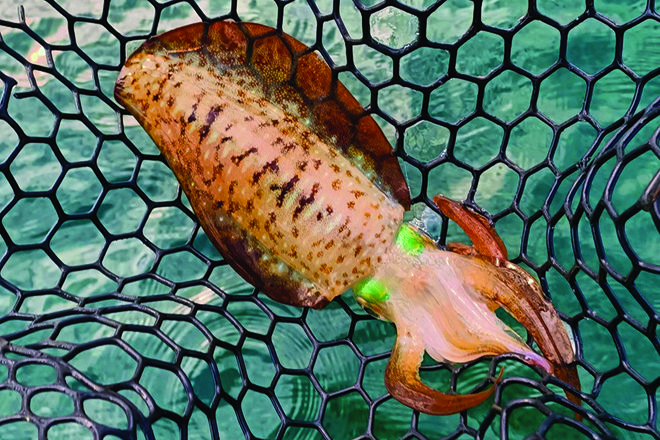




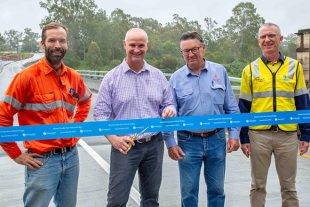
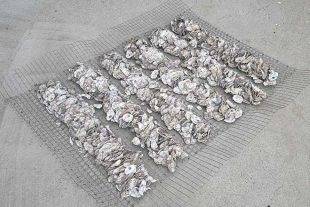
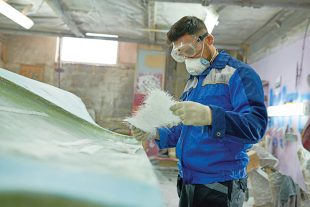

Hi Brian do you know a squid spot somwhere in Gold Coast or Tweed heads for land based squid fishing?
Hi, I am impressed by your article. Thank you. Frank